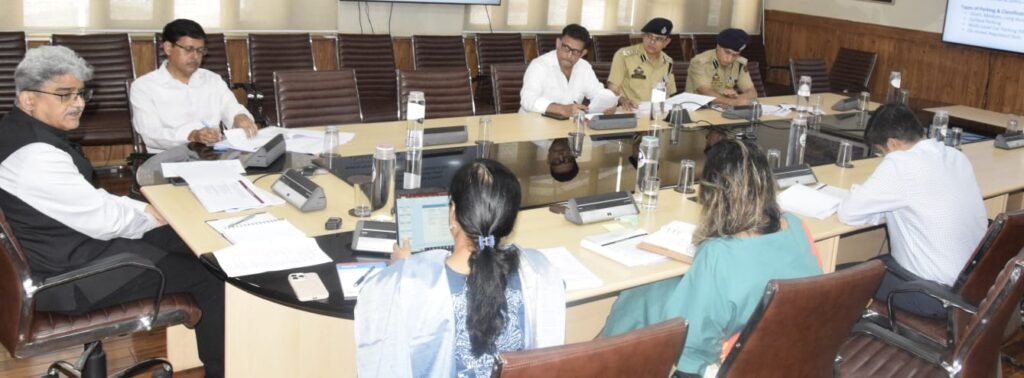CS for framing strategic plan to ease traffic congestion in Sgr, Jmu cities
SRINAGAR, JUNE 21: A pivotal meeting of the Multi-Disciplinary Committee on Traffic Management Systems for Jammu & Srinagar was convened today under the chairmanship of Chief Secretary, Atal Dulloo.
The committee undertook a comprehensive review of the existing traffic challenges and proposed advanced strategies to enhance urban mobility, streamline logistics and improve road safety in both cities.
The members of the Committee who attended the meeting included Principal Secretary, Home; Commissioner Secretary, H&UDD; Commissioner Secretary, Tourism; Divisional Commissioner, Kashmir/Jammu; DIG Traffic, Jammu/Kashmir; SSP Traffic (City), Srinagar/Jammu; Commissioner, JMC/SMC along with other concerned officers.
The Chief Secretary directed for a proper implementation plan with a defined role for every stakeholder involved. He highlighted the importance of such a plan for making the travel experience less cumbersome for both travellers and commuters.
The Chief Secretary asked the Divisional Commissioners to work out such modalities in their respective areas, and subsequently, these are going to be consolidated to frame a well-thought-out strategy for both Jammu and Srinagar. He also advised for looking into creating a web portal defining the actionable points pertaining to different departments so that the role played and progress could be easily tracked in subsequent meetings.
The key discussions held in the meeting revolved around the need for development of detailed traffic management plans for Srinagar and Jammu by the Traffic Department. The focus was laid on utilizing the scientific studies and data analysis to identify alternate routes after incorporating feedback from local authorities, citizens and stakeholders.
A commitment was made to operationalize an efficient traffic management system, including the installation, management and maintenance of traffic signals at key junctions, rotaries and T-points.
Strategies for de-congestion will be implemented in high-footfall and vehicular traffic areas, especially in tourist and pilgrimage zones together by the Traffic and Tourism Departments. Actions to regulate the commercial activities impacting traffic flow will be identified, with the Transport Commissioner, JMC/SMC and potentially LCMA, being involved in this process.
Moreover, the key locations requiring road expansion or upgrading to accommodate the growing traffic volumes will be identified, focusing on increasing the carrying capacity of critical roads. The committee also underscored the need for speedy completion of ongoing developmental projects to alleviate traffic congestion at key locations.
In addition, the strategies for addressing encroachments, particularly by street hawkers and their relocation and rehabilitation without disrupting the traffic flow will be recommended by the Tourism and municipal bodies in consultation with each other.
The plan also delineates identification of traffic-heavy routes where one-way movement or no-traffic zones can be implemented, with clear signage installed there. Routes for introducing e-bus services with increased frequency to reduce personal vehicle usage was also debated to be a step towards decongesting city roads from heavy traffic during peak hours.
Targeted strategies to reduce the accidents and fatalities through better road design, awareness campaigns and stricter enforcement of safety norms were proposed. The holistic approach integrating the traffic management with urban planning and developmentby showing synergy among key stakeholders like Traffic Police, PWD (R&B), NHAI, and local authorities will be ensured for effective traffic resolution through minimal engineering interventions.
Besides, development of infrastructure like bus lay-byes, designation of more spaces for on-street and off-street parking avenues in both the cities were unanimously stressed upon for the ever increasing vehicles plying on roads here.
The Committee also discussed the requirement of multi-modal solutions like Mass Rapid Transit system, city bus system, Inland Water Transport (IWT), Ring Roads, enhanced parking and creation of Unified Transport Authority as other reliable solutions to ease traffic woes in our cities here.



Leave a Reply